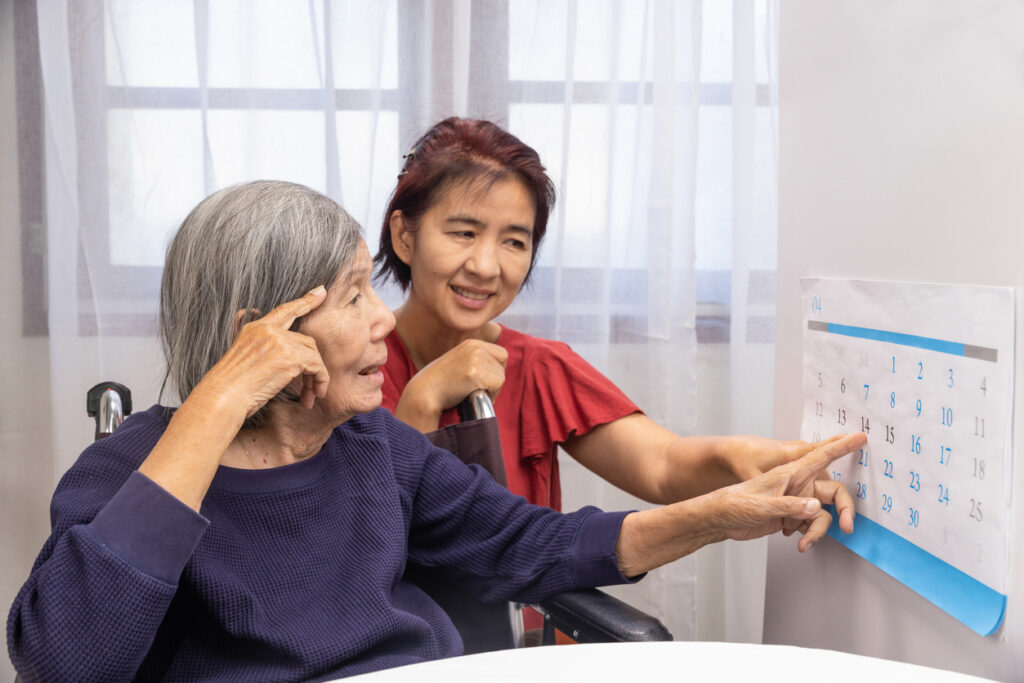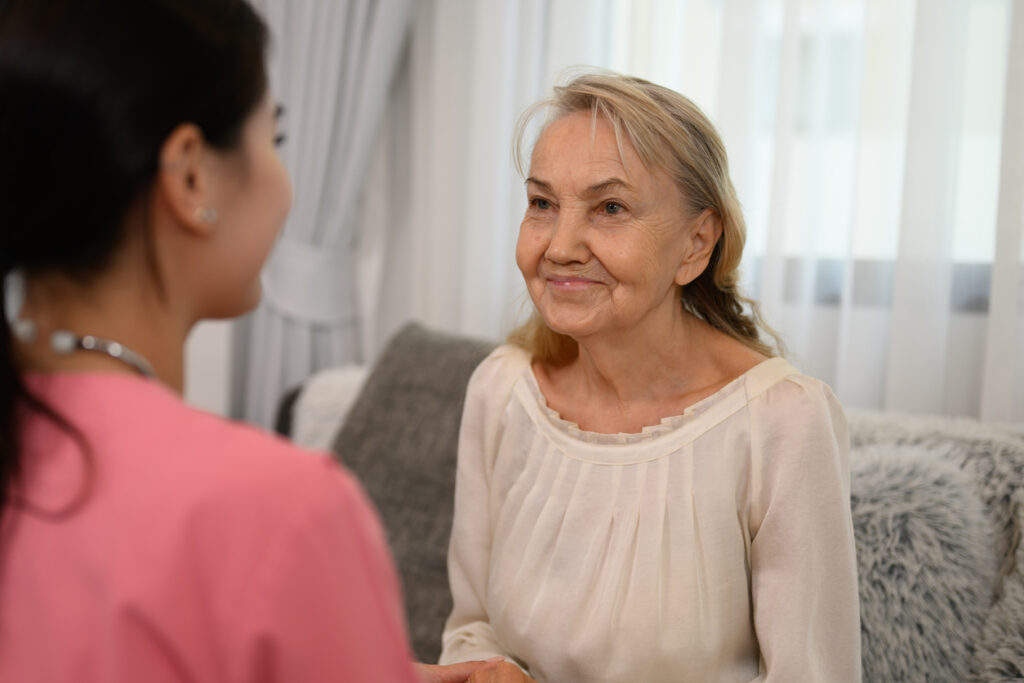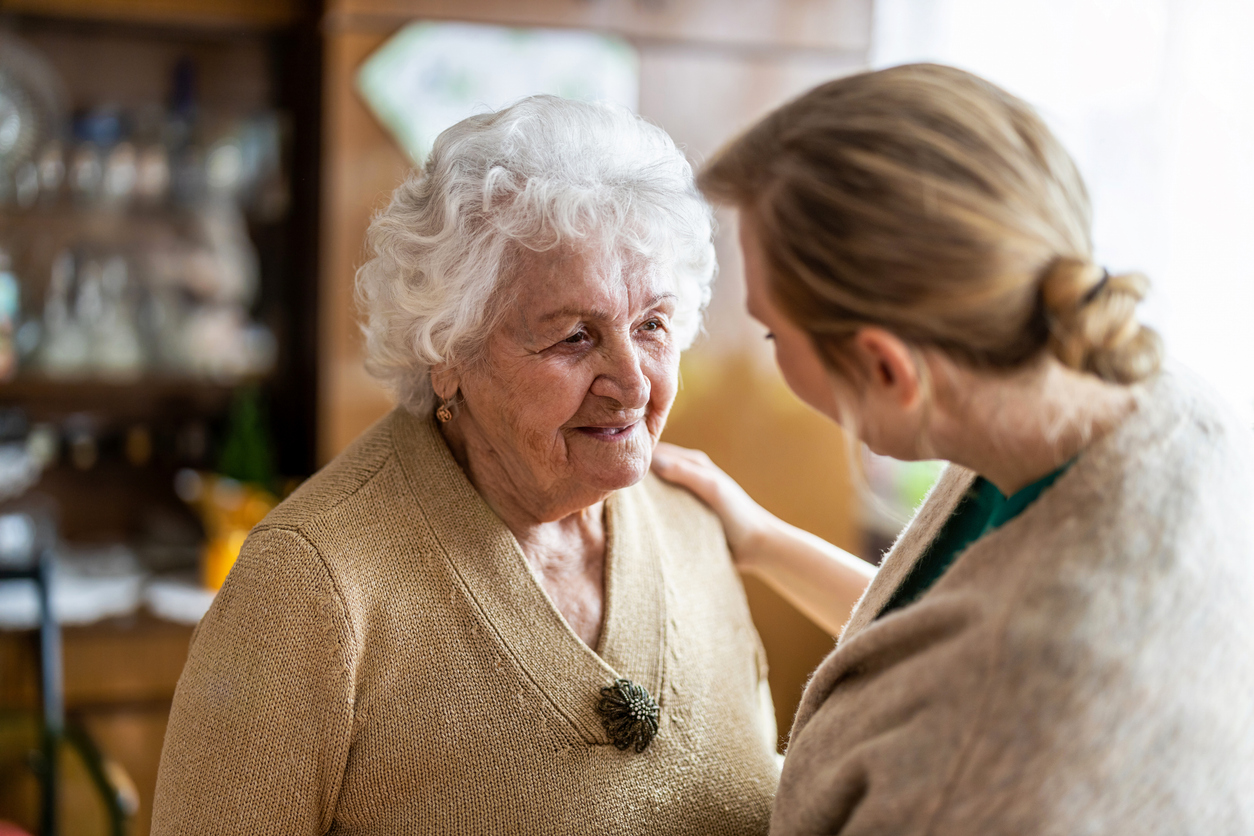Communication, which anchors so much of who we are and how we experience life, can be a mighty challenge for a person living with dementia. But with some extra support, it’s still very much possible.
“Focus on the connections your loved one can still have, versus what they’ve lost,” says HopeHealth clinical educator Lisa Wasson, RN, CHPN, CMDCP, who leads dementia trainings for healthcare professionals and family caregivers.
Start with these simple tips.
> Connect with HopeHealth Circle of Love dementia care
1. Create a calm setting.
Before you launch into communication, pause and look around. Do you see or hear anything that might make it difficult for your loved one to focus?
“From the moment they wake up, the brain of a person living with dementia is working overtime. Their brain becomes fatigued faster than ours,” says Lisa. Their environment can make a big difference, for better or worse.
For a supportive environment:
- Limit the number of people in the room.
- Turn off background noise like the TV.
- Clear away distracting clutter.
- Adjust lights so your loved one can see you clearly.

> Read: How does dementia feel? A new training builds understanding & empathy
2. Before saying anything, help them get their bearings.
We all struggle with focus when we’re stressed or caught off guard. People living with dementia are even more susceptible to this effect. So be thoughtful about how you start any interactions.
“Take your time,” says Lisa. “Help them adjust to what’s going on.”
To help your loved one focus:
- Approach them calmly. Position yourself so you’re directly in their line of sight on their dominant side. (Dementia almost always limits a person’s visual field.)
- Smile and make eye contact. These nonverbal cues can be instantly reassuring.
- Before you start communicating, make sure you have their full attention. Use their first name to get their attention before asking questions or giving instructions.
- Go slow. Use a soothing voice, and speak clearly.
- Share just one idea or instruction at a time. Use simple, direct words and phrases. Limited to 3-5 words at a time.
> Read: Support for the dementia journey: 4 programs for patients and caregivers
3. Show, don’t just tell.
Besides causing memory loss, dementia causes general cognitive decline, including damage to the brain’s language centers. As a result, it may be difficult or impossible for your loved one to process words like they used to.
The good news: Nonverbal clues can help.
“The more visuals, the better,” says Lisa.
To help your loved one understand what you’re saying:
- Use hand gestures, facial expressions, and other visual cues. Think about what you might do if you were playing charades.
- Instead of simply telling, try showing. For example, if you’re encouraging them to brush their hair, demonstrate so they can “mirror” you.
- Use objects and visual aids. For instance, if you’re asking “Do you want a drink of water?,” hold up a glass and pretend to drink from it.

> Read: How to plan meaningful activities for someone living with dementia
4. Include them in the conversation.
For many people with dementia, communication takes time, patience, and courage to keep trying in the face of failure. Encourage your loved one’s interactions whenever and however they come about — and not just with words.
After all, communication isn’t just about exchanging information. “It’s about maintaining a connection with your loved one,” says Lisa.
To keep your loved one engaged:
- Focus on familiar, favorite topics. Think about what they used to talk about most, like a cherished hobby or where they grew up.
- Remind them to use nonverbal cues. Lead by example: Show them when they can point to an object, nod or shake their head, or use other hand gestures.
- When your loved one is sharing a thought or feeling, urge them to keep going — for example, by nodding along and saying “yes.”
- Bring mementos like music, photos and objects to enjoy together. “Try playing or singing songs from your loved one’s childhood or adolescence, which likely formed the strongest memories,” says Lisa.
> Read: 12 music activities & tips for someone with dementia
5. Adapt to your loved one’s reality
Your loved one may talk about past events as if they’re current, or deceased family members as if they’re alive. Simply listen and try to understand what they’re trying to communicate.
“Wherever they are on their timeline, that’s where we need to be too,” says Lisa. “That’s where we find those opportunities for connection.”
To meet your loved one where they’re at:
- Resist the urge to correct them. If they’re talking about the past in the present tense, you should too.
- Respond to feelings, not facts. If they mention incorrect or imagined experiences, go with it.
- Use these moments to help your loved one share themselves. Ask them about the person, place or thing on their mind. What is their favorite thing to do with that person? Or ask, “Tell me more about that.”

> Read: From a dementia caregiver: 10 tips for self-care
6. Focus on patience and empathy.
When challenges arise, try to remain patient with your loved one. “Think about how that person feels. They might not be able to express it, but they’re still feeling it,” says Lisa.
Just as importantly, remain patient with yourself. Take breaks. Be kind to yourself. And remind yourself that your efforts are worthwhile.
“The person living with dementia needs that one-on-one connection,” says Lisa. “They need someone to slow down and take the time to see the person they are, not the dementia.”
Learn more about our Circle of Love Dementia Care Program our our Alzheimer’s Disease Assistance Program. For more information about Alzheimer’s & dementia care, contact us at (844) 671-4673 or Info@HopeDementia.org.

